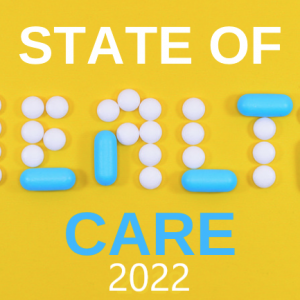Last Updated on February 4, 2022
This article originally appeared on BeMedWise. An up-to-date version can be found here.
Omicron BA.1 has had a major impact on the COVID-19 pandemic. Due to the multiple differences from the Delta variant, the Omicron variant has prolonged and intensified the pandemic, made COVID more difficult to treat, and reduced the effectiveness of currently available coronavirus vaccines and infections from previous variants to prevent further spreading and disease. A new Omicron variant, BA.2, has now entered the picture, although its impact on the epidemic is as yet unknown. The good news is that both Omicron variants are generally milder illnesses.
Omicron BA.1
Omicron BA.1 has three major differences from previous strains of COVID that have impacted the pandemic the most.
1. Omicron reproduces more quickly in the cells of the upper respiratory tract and is more contagious, meaning that it takes less exposure time and lower numbers of virus particles to cause infection. It has been estimated to be 20 times more contagious than Delta and one of the most contagious viruses in the world. Because of the highly contagious nature of the Omicron variant, the prevalence of those infected with COVID went from 0% to 99.9% over the course of two weeks. It is predominately spread by unvaccinated individuals, but vaccinated people can still catch and spread the coronavirus variant.
Not only has Omicron prolonged the pandemic, it has intensified it — partially due to the fact that breakthrough infections were five times more likely with Omicron than previous variants. This resulted in higher peak levels of infection, hospitalizations, and deaths than the Delta variant — 3,400 vs. 2,000 per day. Although Omicron BA.1 has peaked and the number of new cases and hospitalizations is dropping in areas with higher vaccination rates, deaths continue to rise. It is typical for the death rate to continue to rise for a few weeks after the new cases and hospitalizations have peaked.
Some experts predict that Omicron may infect most susceptible people before it runs its course. In theory, this could significantly reduce the population of susceptible individuals, and lead to an eventual end to the pandemic.
2. The symptoms of Omicron are different from previous variants. While the predominant classic symptoms of previously observed COVID-19 infections are high fever, persistent cough, shortness of breath or difficulty breathing, and loss of smell, the predominant symptoms of Omicron are headache, sore throat, night sweats, vomiting, and loss of appetite.
This contributes to Omicron being more contagious since people may not initially realize they have COVID. This increases the spread of the virus because people delay COVID testing and using preventive measures, such as face masks and isolation. It may also delay the diagnosis beyond the interval where antiviral treatment is effective.
Other symptoms are similar, such as fatigue, muscle or body aches, conjunctivitis, and congestion/runny nose.
3. Omicron has proved to be a milder disease for unvaccinated, incompletely vaccinated/unboosted, and fully vaccinated people alike.
Although it may not seem like Omicron is a less serious illness than previous variants, since the peak levels of infection, hospitalizations, and deaths are higher, the variant’s higher transmissibility and ability to evade immune response from vaccines or previous infections is responsible for the higher hospitalization and death rates.
There are other differences between Omicron and previous variants.
- Like with the Delta variant, the Pfizer and Moderna vaccines offer protection from Omicron infections, but it is less. The same is true for keeping people out of the emergency room and from being hospitalized. A study of vaccine effectiveness before immunity starts waning at about 180 days after the second dose showed that the effectiveness for keeping people out of the emergency services was 94% for the Delta variant vs. 82% for Omicron and for keeping people from being hospitalized 94% vs. 90%.
As previously demonstrated, this immunity wanes over time and the protection against breakthrough infection is much less than protection from severe disease
Both Pfizer and Moderna are testing Omicron specific COVID vaccines.
- Like other forms of COVID, Omicron infection offers immunity from illness caused by this variant. For those with previous immunizations, a form of hybrid immunity develops that protects against multiple previous and current COVID variants.
Unfortunately, Omicron has developed ways to avoid some of the immunological measures that protect against previous strains of the SARS-CoV-2 coronavirus. This also makes Omicron easier to catch and spread.
There is much that is currently unknown, such as how well an Omicron infection protects against previous variants if you have not been immunized/boosted (although these variants are unlikely to become dominant again), how quickly immunity from current boosters will wane for Omicron, and if infection will be more protective than immunization with Omicron-specific vaccines.
- Being so new, therapies specific to Omicron have not yet been developed. While it appears that Omicron responds as well as other variants to antiviral medications like remdesivir, it is less susceptible to some of the monoclonal antibody treatments. While sotrovimab remains effective, the FDA is no longer allowing treatment of Omicron with two other monoclonal antibodies used for the Delta variant due to ineffectiveness.
Omicron BA.2
As infections from the BA.1 Omicron variant are decreasing, a new Omicron variant BA.2 has emerged. While in many countries BA.2 is already the predominant strain, it is currently only present in half of the states and makes up about 8% of the cases in the United States.
Although BA.2 has not been around long enough to know much about this variant, it has become obvious that it is even more infectious and contagious than the BA.1 Omicron variant, possibly 1.5 times as much.
The symptoms are similar to the BA.1 variant and early indications are that BA.2 has a similar severity of illness.
The impact of the BA.2 variant will most likely be similar to BA.1, an increase in the prevalence of BA.2, a possible new spike in COVID cases, even less protection from previous vaccinations and Alpha and Delta infections. Since BA.2 is only about 1.5 times as contagious as BA.1, compared to the 20 times between Omicron and Delta, the effect won’t be as dramatic. However, previous Omicron infection does confer protection against BA.2.
It is not yet known what the effect of the BA.2 variant will be on case numbers, hospitalizations, and deaths or how it will respond to existing treatments.
The Future of COVID
The major impact of Omicron and other variants that are sure to develop comes from the prolongation of the pandemic and all the possible consequences from that. However, any further predictions are speculative and dependent on the development of vaccines to new variants, the effectiveness of antiviral and other COVID treatments, the availability and accuracy of COVID-19 testing, the effectiveness of workplace and restaurant modifications to reduce spread, the number of people who remain unvaccinated or unboosted, and how the novel coronavirus mutates over time.
The milder illness and prediction that most susceptible people will get Omicron has led some to speculate that the pandemic may be winding down, and the “new normal” will be an endemic stage, such as the flu, with regular vaccinations and seasonal use of preventive measures.
There are still numerous hazards, other than the possibility of more virulent variants developing, that can occur even if this “new normal” is achieved. These include many of the things we have already experienced, such as:
- More deaths;
- Continued overwhelming of the medical system and provider burnout;
- Higher rates of mental illness, heart attacks, and stroke;
- More people with long-COVID syndrome or permanent disabilities;
- Continued detrimental effects on jobs, the economy, and our daily lives; and
- Prolonged use of preventive measures, such as face masks and reduced social interaction.
However, many experts are concerned that, as long global vaccine equity remains an issue and the number of unvaccinated and unboosted people remains so high, COVID infection will remain widespread and the possibility for new and more serious variants is significant.
Finally, it is important to remember that the 69% of children aged 5-11 years who have not been vaccinated and those who cannot be vaccinated, which currently includes all children under 5 years old and those with immune issues will be susceptible to COVID-19 and at higher risk for serious disease and death. This will last until most people have either had the disease or choose to become vaccinated and boosted.
The NeedyMeds website has a database of over 100 nationwide resources for those who have been impacted by COVID-19. For those looking for information on receiving a coronavirus vaccine, find your area’s locations and appointment availability at vaccines.gov. There may be options for children to get vaccinated even if their parents don’t grant permission.





